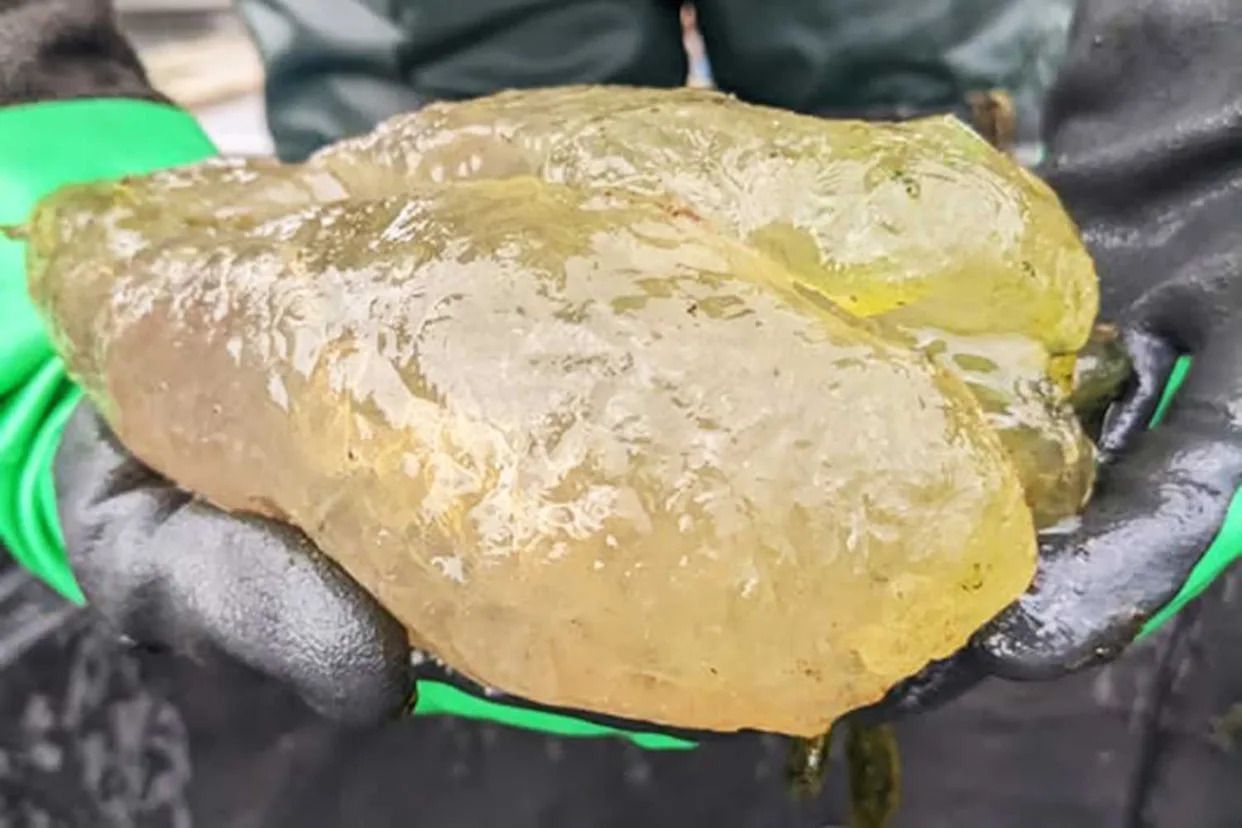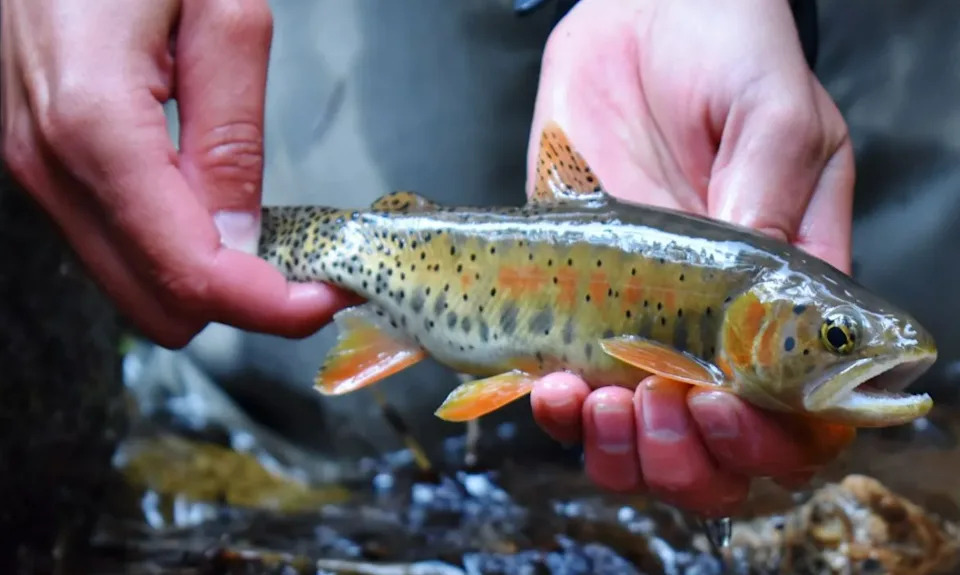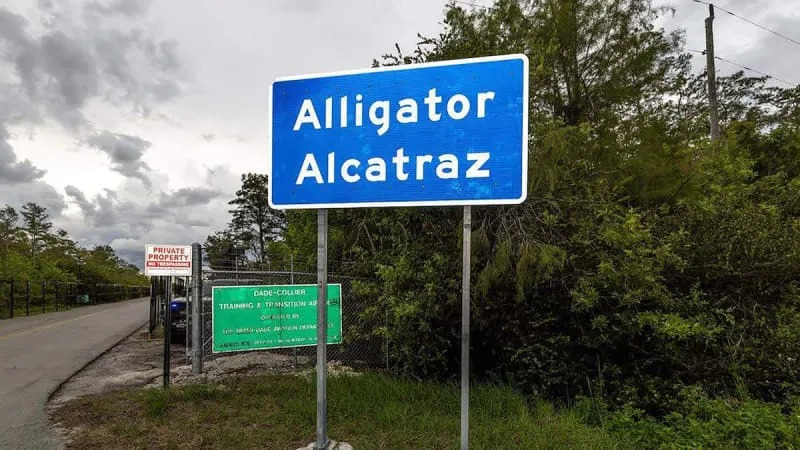
First, there were "Frankenstein rabbits," and now there are "cursed gummy bears."
The U.S. Fish and Wildlife Service (USFWS) shared a reminder on Facebook about the odd things you can find living in U.S. lakes. On August 17, the agency posted a photo on social media of someone holding what appears to be a large ball of gelatinous goo.
But appearances can be deceiving, and the truth behind the photo is something much more "magnificent."
"Cursed Gummy Bear? Nope, just a magnificent bryozoan doing its thing," USFWS started the caption of its post.
The agency added that the magnificent bryozoan may look like "a gummy, a pile of frog eggs, a mutant brain, or a sci-fi nightmare," but it's actually a community of zooids, "tiny, filter-feeding creatures."

Allen J. Schaben/Los Angeles Times via Getty
Bryozoan by lakeOne magnificent bryozoan blob contains thousands of zooids "working together in harmony."
The bryozoan colony featured in the USFWS's post was recently discovered in Michigan's Lake Huron, but the blobs have been on Earth for a lot longer than a few weeks. The ancient organisms are over 480 million years old, per the USFWS's website.
"These ancient creatures breathe life into freshwater, capturing plankton and cleaning the water as they drift in slow-moving rivers and lakes. Some colonies grow over a foot wide, pulsing gently with the current, a secret world hidden in plain sight," the agency added on Facebook.
If someone spots one of these blobs floating on the surface of a lake or river, it's best to let it be, so the bryozoan colony can continue its work purifying the lake.
Water lovers will likely only spy bryozoans during warmer weather because, as the weather grows colder, the creatures "release statoblasts, microscopic survival pods that can withstand freezing, drying, and even time itself. When conditions are right, they awaken, building new colonies and continuing their ancient cycle."
Never miss a story — sign up for PEOPLE's free daily newsletter to stay up-to-date on the best of what PEOPLE has to offer, from juicy celebrity news to compelling human interest stories.
The USWFS closed out its informational post, reminding readers that magnificent bryozoans, like the one pictured in the agency's post, are among the most common bryozoans in the U.S.. Still, there are thousands of bryozoan species worldwide.
Read the original article on People








Comments